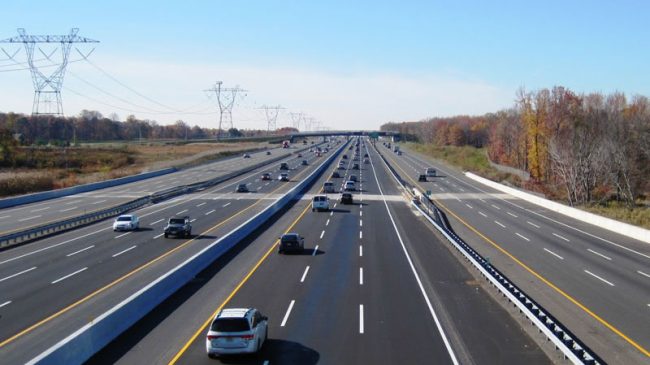A recent study released by Inrix, a traffic analytics and technology firm, ranks four U.S. regions among the ten most congested in the world. In the past, public officials have tried to reverse congestion trends by increasing transit investment and adding lanes to the highway network. However, congestion seems to be worsening. While adding general purpose lanes may provide short-term relief, the best way we can solve our long term mobility issues is with variably-tolled express lanes and managed arterials.
The results of the Inrix study show Los Angeles, CA has the worst congestion in the world; after L.A. is New York which ranks third followed by San Franciscowhich ranks fourth. Atlanta, which has the fourth-worse U.S. congestion, ranks eighth. Commuters in these places spend far more time in their cars than those in other U.S. regions. According to the study, LA commuters spend 104 peak hours in congestion, New York residents spend 89.4 hours, San Francisco commuters 82.6 hours and Atlanta drivers spend 70.8 hours. Not only do these hours spent in traffic waste valuable work and leisure time, they waste fuel, slow down delivery services and cut off greater market/regional access.
Traffic is a problem in all parts of metro areas: urban cores, suburban cities and exurban locales. While the SF Gate points towards Uber and Lyft as the root cause of San Francisco’s traffic, the real problem is a handful of non-tolled major expressways and bridges:specifically 101, I-80, and the bay bridge. In the New York City region there has been a recent push for narrow complete streets and “vision-zero” pedestrian centric planning initiatives. New York has also seen a recent boom in construction, tourism and economic growth bringing construction to all time highs. Both of these elements contribute to the perfect storm nightmare of traffic congestion woes for New Yorkers. It is not surprising that New York City and San Francisco are in need of market based solutions to traffic congestion, not bureaucratic oversight.
Under our current system, motorists can drive as much as they want with the price of gasoline as the only limiting factor. Our roads operate as an all you can eat buffet, not as a properly priced scarce public good. Government transportation agencies may invest in added lanes, or dream up hypothetical solutions such as a double-decker highway. However, no matter how much we increase the supply of highway lanes or city streets, induced demand, the concept that more lanes will lead to more demand will always be a factor. The natural occurrence of induced demand leaves toll roads and managed arterials as the transportation community’s front line defense against the gridlock which plagues the nation’s highways and arterial streets. If we use natural market forces to control roadway demand, the poor congestion statistics that we experience in major U.S. cities will become an epidemic of the past.
Despite having the first variably-priced expressway in the country, Southern California is lagging Atlanta, Dallas and Washington DC in providing express toll lanes. The recent widening of I-405 through the Sepulveda Pass added more exit ramps and an additional HOV lane in each direction but has left traffic in the same condition as it was before the project began.
Atlanta widened parts of I-75 to 15 lanes, but congestion remains. According to a recent survey by Curbed Atlanta, 90 percent of Atlanta newcomers interviewed, found traffic to be the largest downside to the city. Fortunately, Atlanta is taking several initiatives to improve mobility. As a result, the region has built variably-priced toll lanes. The I-75 and I-85 express toll lanes in Atlanta have shown the benefits of variable rate toll services especially for rush hour commuters. I-75 also features reversible toll lanes allowing the expressway to transfer capacity from the northbound to the southbound lanes during peak rush hours.
Managed arterials and toll/express lanes would aim to mitigate these unique traffic congestion issues in the U.S., providing market based, variable rate tolling. Variable-rate tolling services such as express lanes and managed arterials are essential to moving people, goods and services within a reliable time frame. Managed arterials and toll lanes also have the ability to move more vehicles through the same space per hour compared to conventional arterials and expressway lanes. Variable-rate tolling has the ability to increase an employee’s range of jobs by decreasing commute times, saving fuel (by mitigating stop-and-go traffic), and providing a guaranteed trip time to drivers.

